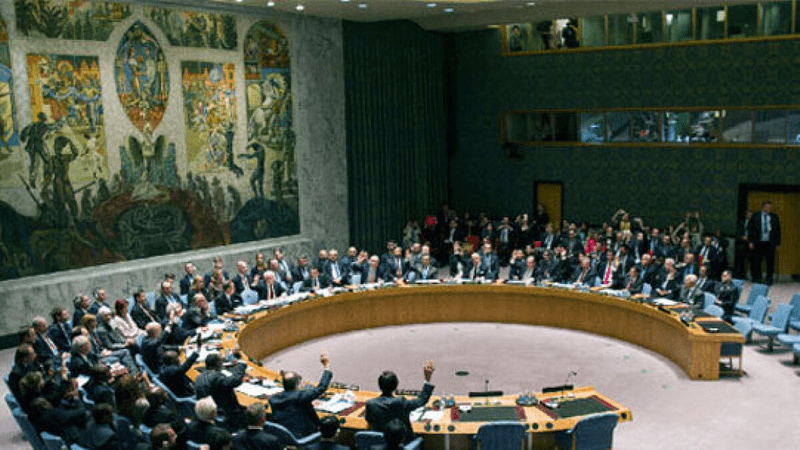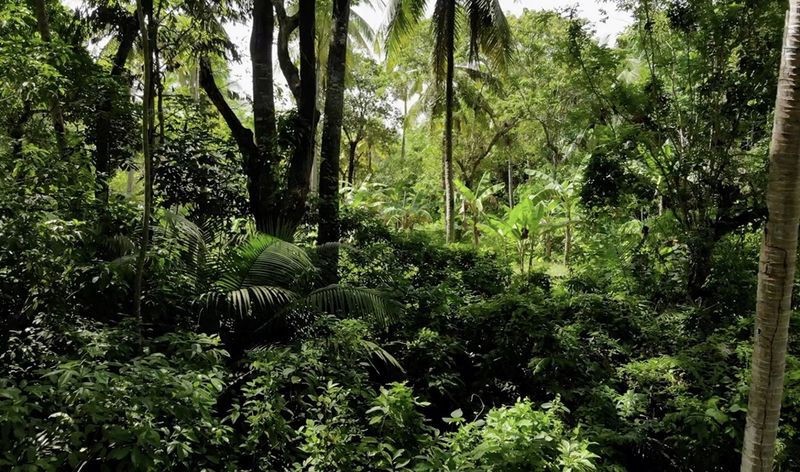Cabinet approves India’s Updated NDC to be communicated to the UNFCCC (GS Paper 3, Environment)

Why in news?
- The Union Cabinet has approved India’s updated Nationally Determined Contribution (NDC) to be communicated to the United Nations Framework Convention on Climate Change (UNFCCC).
Mandate:
- The updated NDC seeks to enhance India’s contributions towards achievement of the strengthening of global response to the threat of climate change, as agreed under the Paris Agreement. Such action will also help India usher in low emissions growth pathways.
- It would protect the interests of the country and safeguard its future development needs based on the principles and provisions of the UNFCCC.
Panchamrit at COP26:
- India at the 26th session of the Conference of the Parties (COP26) to the United Nations Framework Convention on Climate Change (UNFCCC) held in Glasgow, United Kingdom, expressed to intensify its climate action by presenting to the world five nectar elements (Panchamrit) of India’s climate action.
- This update to India’s existing NDC translates the ‘Panchamrit’ announced at COP 26 into enhanced climate targets. The update is also a step towards achieving India’s long term goal of reaching net-zero by 2070.
2015 NDC:
- Earlier, India submitted its Intended Nationally Determined Contribution (NDC) to UNFCCC on October 2, 2015.
- The 2015 NDC comprised eight goals.
- Three of these have quantitative targets upto 2030 namely,
- cumulative electric power installed capacity from non-fossil sources to reach 40%;
- reduce the emissions intensity of GDP by 33 to 35 percent compared to 2005 levels and
- creation of additional carbon sink of 2.5 to 3 billion tonnes of CO2 equivalent through additional forest and tree cover.
Updated NDC:
- As per the updated NDC, India now stands committed to reduce Emissions Intensity of its GDP by 45 percent by 2030, from 2005 level and achieve about 50 percent cumulative electric power installed capacity from non-fossil fuel-based energy resources by 2030.
- India’s updated NDC has been prepared after carefully considering our national circumstances and the principle of common but differentiated responsibilities and respective capabilities (CBDR-RC).
- It also reaffirms commitment to work towards a low carbon emission pathway, while simultaneously endeavoring to achieve sustainable development goals.
LIFE:
- Recognizing that lifestyle has a big role in climate change, the Prime Minister of India, at COP 26, proposed a ‘One-Word Movement’, to the global community. This one word is LIFE…L, I, F, E, i.e. Lifestyle For Environment.
- The vision of LIFE is to live a lifestyle that is in tune with our planet and does not harm it. India’s updated NDC also captures this citizen centric approach to combat climate change.
Cleaner Energy:
- The updated NDC also represents the framework for India’s transition to cleaner energy for the period 2021-2030.
- The updated framework, together with many other initiatives of the Government, including tax concessions and incentives such as Production Linked Incentive scheme for promotion of manufacturing and adoption of renewable energy, will provide an opportunity for enhancing India’s manufacturing capabilities and enhancing exports.
- It will lead to an overall increase in green jobs such as in renewable energy, clean energy industries- in automotives, manufacturing of low emissions products like Electric Vehicles and super-efficient appliances, and innovative technologies such as green hydrogen, etc.
Implementation of updated NDC:
- India’s updated NDC will be implemented over the period 2021-2030 through programs and schemes of relevant Ministries /departments and with due support from States and Union Territories.
- The Government has launched many schemes and programs to scale up India’s actions on both adaptation and mitigation.
- Appropriate measures are being taken under these schemes and programs across many sectors, including water, agriculture, forest, energy and enterprise, sustainable mobility and housing, waste management, circular economy and resource efficiency, etc.
- As a result of the aforesaid measures, India has progressively continued decoupling of economic growth from greenhouse gas emissions.
- The Net Zero target by 2030 by Indian Railways alone will lead to a reduction of emissions by 60 million tonnes annually. Similarly, India’s massive LED bulb campaign is reducing emissions by 40 million tonnes annually.
Way Forward:
- India’s NDC do not bind it to any sector specific mitigation obligation or action. India’s goal is to reduce overall emission intensity and improve energy efficiency of its economy over time and at the same time protecting the vulnerable sectors of economy and segments of our society.
India to host UNSC special meeting on counter-terrorism
(GS Paper 2, International Organisation)
Why in news?
- India will host diplomats of the UN Security Council in October for a special meeting on counter-terrorism in India on 29 October, 2022.
India’s tenure & Current Members at UNSC:
- India is halfway through the second year of its two-year term as an elected non-permanent member of the UN Security Council.
- India's tenure at the Council will end in December 2022, when the country will also preside as President of the powerful UN organ for the month.
- India chairs the Security Council Counter-Terrorism Committee for 2022 and will in October host diplomats of the 15-nation Security Council.
- Current members of the Security Council are Albania, Brazil, Gabon, Ghana, India, Ireland, Kenya, Mexico, Norway and the UAE, along with five permanent members China, France, Russia, the UK and the US.

Focus areas:
- The United Nations Security Council Counter-Terrorism Committee (CTC) said the special meeting will specifically focus on three significant areas where emerging technologies are experiencing rapid development, growing use by member states (including for security and counter-terrorism purposes), and the increasing threat of abuse for terrorism purposes, namely
- Internet and social media,
- terrorism financing, and
- unmanned aerial systems (UAS).
Venue:
- It is not very frequent that the Counter-Terrorism Committee meets outside of New York, but the meeting in India will be the seventh time that this is happening.
- The most recent special meeting of the CTC outside of United Nations headquarters took place in Madrid, Spain, in July 2015, focusing on foreign terrorist fighters (FTFs).
Counter-terrorism:
- With the prevalence of technology and rapid rise in digitisation, the use of new and emerging technologies to counter-terrorism is a topic of growing interest among the member states, policymakers and researchers, particularly in the context of the increasing role played by technology in terrorism and counter-terrorism.
- This is addressed by the Security Council in a number of counter-terrorism-related resolutions, most recently resolution 2617 (2021), which explicitly cited emerging technologies.
India's first woman envoy at UN:
- India's then Permanent Representative to the UN Ambassador T S Tirumurti had in January 2022 assumed the Chair of the Security Council Counter-Terrorism Committee for 2022.
- Ambassador Ruchira Kamboj, the country's new envoy to the UN, now assumes that role.
About Counter-Terrorism Committee (CTC):
- The Counter-Terrorism Committee (CTC) was established in 2001 in the wake of the 9/11 terrorist attacks. UNSC Resolution 1373 (2001) had established the Counter-Terrorism Committee as a subsidiary body of the Council.
- On the eve of assuming Chair of the CTC in December 2021, India had voted in favour of a resolution to renew the mandate of the Counter-Terrorism Committee Executive Directorate (CTED).
- The UN Security Council, through its written silence procedure, renewed the mandate of the Executive Directorate until 31 December, 2025.
Way Forward:
- As the Chair of the CTC for 2022, India will make determined efforts to further enhance the role of the CTC in strengthening the multilateral response to counter-terrorism, and more importantly, ensuring that global response to the threat of terrorism remains unambiguous, undivided and effective, India had said in its explanation of vote to renew the CTED mandate.
Parliament passes the National Anti-Doping Bill 2022
(GS Paper 2, Governance)
Why in news?
- Recently, the Parliament passed the National Anti-Doping Bill, 2022, a legislation providing a statutory framework for the functioning of the National Anti-Doping Agency and scaling up the network of dope testing laboratories in the country.
- The timing of the bill assumes significance, as it comes close on the heels of an incident in which five members of India’s contingent for the 2022 Commonwealth Games failed their anti-doping tests.

Background:
- The National Anti-Doping Bill was introduced in Lok Sabha on 17th December, 2021 and passed on 27th July, 2022 with some Official Amendments proposed on the basis of the suggestions/recommendations received from the Parliamentary Standing Committee and some other key stakeholders.
- The bill, piloted by Sports and Youth Affairs Minister Anurag Thakur, was passed in the Rajya Sabha through a voice vote. With this, the Bill stands passed in the Parliament.
The salient features of the Bill are as follows:
Statutory framework in the form of legislation for prohibition of doping in sports and enforcing anti-doping activities in the country. The proposed Bill intends to accomplish: -
- Building institutional capabilities in anti-doping and enabling hosting of major sports events;
- Protecting rights of all sportspersons;
- Ensuring time-bound justice to athletes;
- Enhancing cooperation among agencies in fighting doping in sports;
- Reinforcing India’s commitment to international obligations for clean sports;
- Independent mechanism for anti-doping adjudication;
- Providing legal sanctity to National Anti Doping Agency (NADA) & National Dope Testing Laboratory (NDTL);
- Establishing more Dope Testing Labs;
- Creating job opportunities both, directly & indirectly; and
- Creating opportunities for academic research, science and manufacturing relating to Anti-Doping.
- Establishing standards for the manufacturing of nutritional supplements for sports in India.
What’s the National Anti-Doping Bill, 2022?
- The National Anti-Doping Bill, 2022 was introduced by Sports Minister Anurag Thakur in the Lok Sabha in December 2021, but was later referred to a Standing Committee, over some concerns.
- The bill will facilitate the operation of the National Anti-Doping Agency, the National Dope Testing Laboratory and other allied bodies.
- Currently, anti-doping activities are implemented by the National Anti-Doping Agency, which was established as a society.
Empowering NADA:
- The bill will now permit the National Anti-Doping Agency (NADA) to conduct raids to catch doping offenders.
- The NADA will have the power of “levying sanctions for anti-doping rule violations, the disciplinary procedures to be adopted and the powers of inspection, sample collection and sharing and free flow of information.”
- Presently, NADA isn’t empowered to conduct raids if it suspects or has proof of sportspersons indulging in doping activities at any premises, including national camps.
National Board for Anti-Doping:
- The National Board for Anti-Doping in Sports will be established to make recommendations to the government on anti-doping regulations and compliance with international commitments on anti-doping. The board will oversee the activities of NADA and issue directions to it.
- With the passage of the bill, any rule violation with regard to anti-doping policies will result in disqualification of a sportsperson’s results, including forfeiture of medals, points, and prizes, ineligibility to participate in a competition or event for a prescribed period, and financial sanctions.
Does India really have a doping crisis?
- The bill comes in the backdrop of a number of high-profile Indian athletes failing dope tests.
- Jumper Aishwarya Babu, a medal hopeful for the Commonwealth Games, failed her doping test during the National Inter-State Athletics Championships held in July 2022.
- Sprinter S Dhanalakshmi was also barred for allegedly using illegal chemical substances, which came to light after her test was carried out by the Athletics Integrity United (AIU). She was the country’s only participant in the women’s 100m race, and a member of the 400m relay team.
- Earlier in May, India’s top discus thrower Kamalpreet Kaur was provisionally suspended for failing a dope test conducted by the Athletics Integrity Unit (AIU).
- Kaur had made rapid strides last year and set a national record of 66.59 metre at the Indian Grand Prix IV in June to seal her berth at the Tokyo Olympics. She finished second in her group at Tokyo to advance to the final round, where she finished sixth with a best throw of 63.70 m.
- Doping is clearly an issue in India, as it was ranked third in the World Anti-Doping Agency (WADA) report released in 2021. With 152 cases across disciplines, the country is marginally below leaders Russia (167) and Italy (157).
Forest losses occur primarily in lower-income tropical countries: Study
(GS Paper 3, Environment)
Why in news?
- Deforestation has worried policymakers for decades as a catalyst to global warming. Now a recent study has drawn a correlation between forest cover and the economic strength of countries.
- Higher-income countries, especially those outside the tropics usually gain in forest cover while lower-income, tropical countries primarily lose them. The gross forest loss outweighed the gross forest gain.

Key Finding:
- A decline in forest cover, along with the population increase over the period, has led to a decrease in forest cover by over 60 per cent. Such a massive decline threatens the future of biodiversity and impacts the lives of 1.6 million people in developing countries who depend on forests.
- Tropical countries such as Indonesia, Myanmar and the Democratic Republic of Congo (DR Congo) are in the early transition phase and are losing forests quickly.
- Indonesia, Brazil, DR Congo, Myanmar, Paraguay, Colombia, Bolivia, Argentina, Angola and Venezuela are the top net forest-losing countries in terms of area.
Factors responsible:
- Unprecedented commercial logging, large-scale clearing for mining, expansion of oil palm plantations, decentralisation of forest management and socio-political transitions are the dominant drivers of forest loss in these countries.
- Logging and non-mechanised forest clearing for agriculture resulted in the persistent forest loss in DR Congo. Myanmar’s cases of forest loss are also similar to DR Congo.
- In Colombia, armed conflicts, cattle ranching and agricultural expansions are the major causes of forest degradation.
Forest gaining countries:
- Australia, India, the USA, China, Russia, Vietnam, Spain, France, Sweden and Iran are the top ten net forest-gaining countries in terms of area.
- Proactive conservation policies, sustainable forest management, reforestation and afforestation programmes have accelerated forest gains in these regions.
Basis of study:
- The researchers used the global land use dataset to examine how global forests have changed over space and time.
- They have also taken data from a country boundary geographic information system format from the Database of Global Administrative Areas (GADM). GADM is a regional classification of countries by the World Bank based on income levels, population and gross domestic product.
- The change in the spatiotemporal pattern of global forests supports the forest transition theory, with most forest losses occurring mainly in the lower-income countries in the tropics and forest gains in higher-income countries.
Forest transition:
- Forest transition refers to a geographic theory describing a reversal or turnaround in land-use trends for a given territory from a period of net forest area loss to a period of net forest area gain.
- Monitoring the world’s forests is integral to fulfil various global environmental and social initiatives — including the Sustainable Development Goals, the Paris Climate Agreement and the Global Biodiversity Framework.
Way Forward:
- The study results highlight the need to strengthen the support given to lower-income countries, especially in the tropics, to help them improve their capacity to minimise forest losses.
- Higher-income counties need to reduce their dependence on imported forest products from tropical countries to help them address the challenges related to forest loss, the findings of the study noted.





